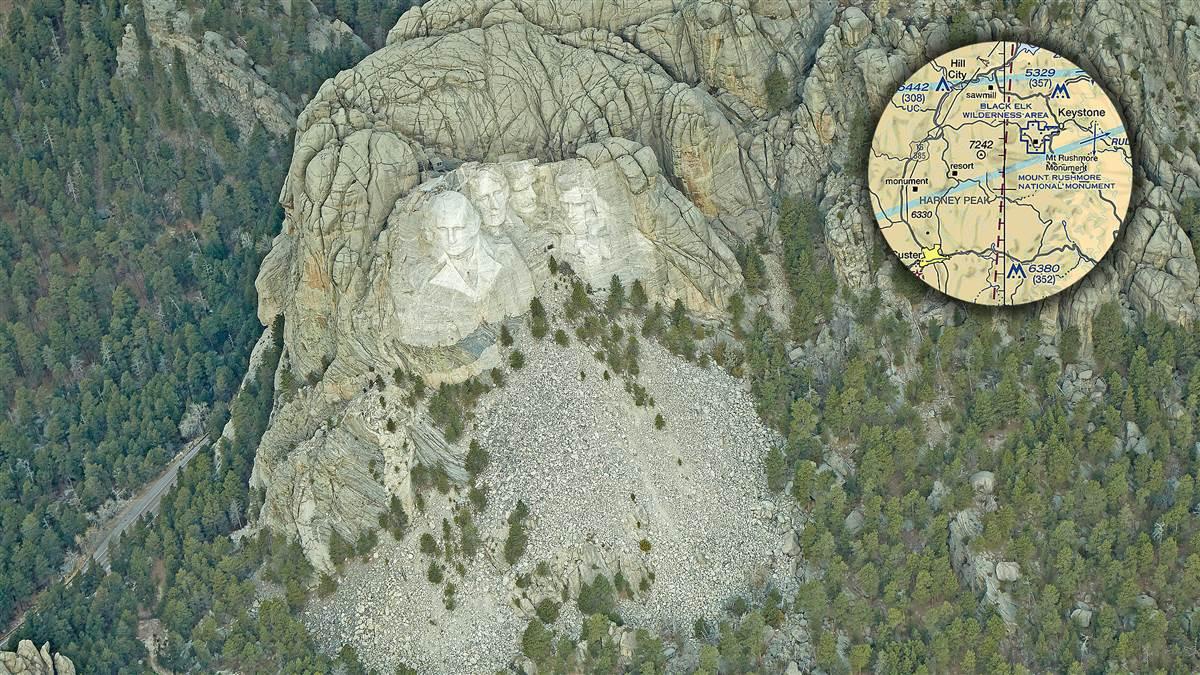
In South Dakota, wide open spaces refer as much to the airspace as to the landscape. It’s a big world out here, where aviators can roam freely across the skies without much interference from other traffic. From the plains to the Badlands, it’s a blank slate in which to fly—and a great opportunity to see two of the nation’s most distinctive landmarks from a vantage point few have.
South Dakota’s slogan—Great Faces. Great Places—points out that Mount Rushmore and the Crazy Horse Memorial are worth the effort to get here. The nearest town is Keystone and from a major city it would take several hours’ driving through the Badlands and Black Hills (both named by the Native American tribes—particularly the Lakotas—who accurately proclaimed the rocky, needlelike mountains as “bad” but were slightly off on their description of the green and gold hills as black).
Mount Rushmore took sculptor Gutzon Borglum 14 years to complete and Crazy Horse has been under construction since 1948; the face was completed in 1998. Sculptor Korczak Ziolkowski had also worked on Mount Rushmore before falling out with Borglum’s son. Crazy Horse is carved into Thunderhead Mountain in an area the Lakota believe is sacred ground.
Nearby airports are Custer County (CUT), Custer State Park (3V0), Rapid City Regional (RAP), and Hot Springs (HSR).
Why you should go:
The monuments are carved from fossilized earth that is 70 million years old.
WHAT YOU SHOULD KNOW
The Mount Rushmore monument is marked on the VFR sectional chart. The area around Mount Rushmore is designated as “charted U.S. wildlife refuges, parks, and forest service areas.” Pilots are requested to fly no lower than 2,000 feet above designated wildlife and other noise-sensitive areas (FAA Advisory Circular 91-36D). Pilots should also notify Ellsworth Air Force Base of their activity in the area.


